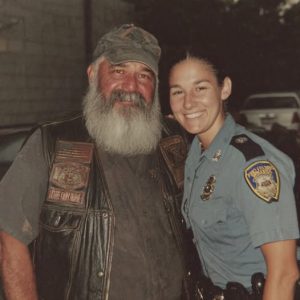The world of antiques and collectibles is filled with surprises, and sometimes, the most unassuming items can turn out to be treasure.
This is the story of a man named Ted, who brought a seemingly ordinary blanket to the Antiques Roadshow, only to discover that it was a rare and valuable artifact.
The blanket, a mid-19th Century Navajo Ute First Phase blanket, was not just an antique but a piece of history that held a significant monetary value.
It originally belonged to a Chieftan.

SOURCE:YOUTUBE – ANTIQUES ROAD SHOW PBS
Ted’s story begins with a blanket that was given to his grandmother’s foster father by Kit Carson, a frontiersman and folk hero of the American West.
Ted believed the blanket to be Navajo, but he had no idea of its true significance.
When he presented it to Donald Ellis, an appraiser on the Antiques Roadshow, Ellis was visibly taken aback.
The blanket was not just a Navajo artifact; it was a Ute First Phase blanket.
It’s a rare and valuable piece of Navajo weaving.
The Ute First Phase blanket is a unique piece of Navajo weaving.

SOURCE:YOUTUBE – ANTIQUES ROAD SHOW PBS
Made for Ute chiefs in the mid-19th century, these blankets are characterized by their pure linear design.
They represent the beginning of Navajo weaving.
It was what they included before the introduction of patterns and diamonds.
The blanket that Ted brought in was in unbelievable condition, despite a little bit of damage. Its texture was almost like silk, a testament to the fine hand-woven wool used in its creation.
The blanket was dyed with indigo, a valuable dye at the time.
Interestingly, there was an old repair on the blanket, probably done in the 1860s, with raveled bayeta, a significant element in Navajo weaving.
This repair, along with the blanket’s overall condition and design, made it an extraordinary piece of art and a national treasure.
Ellis asked Ted if he had any idea of the blanket’s value. Ted, who was not a wealthy man, had no clue.
Ellis then revealed that on a bad day, the blanket would be worth $350,000, and on a good day, it could fetch up to half a million dollars.
Ted was left speechless by this revelation.
The blanket that had been casually lying on the back of a chair was now a life-changing artifact.

SOURCE:YOUTUBE – ANTIQUES ROAD SHOW PBS
Ellis further explained that the value he quoted did not take into account the blanket’s provenance or its history of ownership.
It it was truly Kit’s, the estimate goes up.
Provenance can sometimes be difficult to ascertain, but if it could be proven without a reasonable doubt that Kit Carson did indeed own the blanket, its value could increase by another 20%.
Ted was overwhelmed by the news.
His family were poor farmers, and there was no wealth in the family. The blanket, a seemingly ordinary item, was now a symbol of unexpected fortune.
Ted was moved to tears by the revelation, a testament to the power and surprise of discovering a hidden treasure.
The video ends with Ted thanking Ellis, still in disbelief over the value of his blanket.
His story serves as a reminder of the surprises that can be found in the most unexpected places.
It also highlights the importance of preserving and appreciating historical artifacts, as they can hold significant cultural and monetary value.
Ted’s Navajo Ute First Phase blanket, a gift from a historical figure to his ancestor, turned out to be a national treasure worth a fortune.
This story serves as a reminder of the rich history and value that can be found in seemingly ordinary items and the importance of preserving these pieces of our past.
Would you believe the value has increased significantly since this episode originally aired? It’s now estimated to fetch anywhere between $750,000 to $1,000,000!
Please SHARE this with your friends and family.





